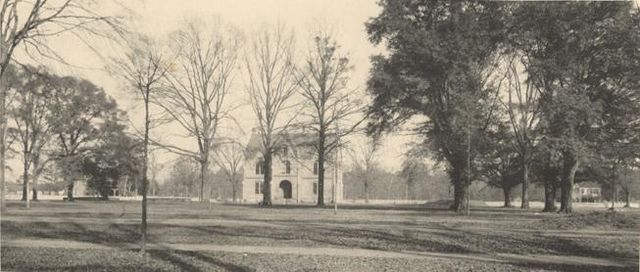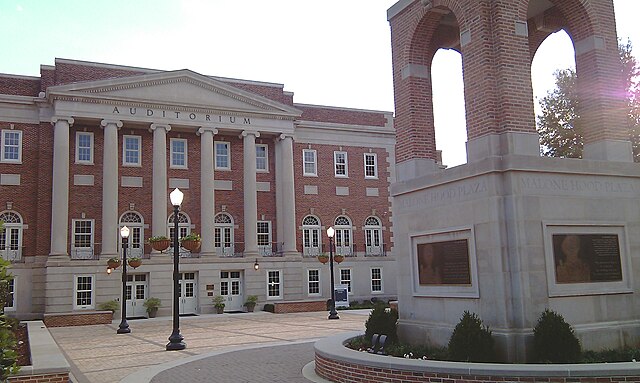The University of Alabama is a public research university in Tuscaloosa, Alabama. Established in 1820 and opened to students in 1831, the University of Alabama is the oldest and largest of the public universities in Alabama as well as the University of Alabama System. It is classified among "R1: Doctoral Universities – Very high research activity".
View of the Quad in 1859. The Rotunda can be seen at center, with the halls visible in the background. All buildings depicted were destroyed on April 4, 1865.
A view of either Tuomey Hall or Oliver-Barnard Hall, one of the first buildings constructed after the university reopened after the Civil War, in 1907
George Wallace's "stand in the schoolhouse door" to attempt to stop integration of other races at the University of Alabama.
Foster Auditorium and Malone-Hood Plaza today. Lucy Clock Tower is in the foreground.
Tuscaloosa is a city in and the county seat of Tuscaloosa County in west-central Alabama, United States, on the Black Warrior River where the Gulf Coastal and Piedmont plains meet. Alabama's fifth-most populous city, the population was 99,600 at the 2020 census, and was estimated to be 110,602 in 2022. It was known as Tuskaloosa until the early 20th century. It is also known as "the Druid City" because of the numerous water oaks planted in its downtown streets since the 1840s.
Wallace standing against desegregation while being confronted by Deputy U.S. Attorney General Nicholas Katzenbach at the University of Alabama in 1963
Foster Auditorium and Malone-Hood Plaza in 2010. Lucy Clock Tower is in the foreground.
Immediate aftermath of the April 27th, 2011, tornado. Druid City Hospital in the background.
Black Warrior River in Tuscaloosa; M&O Railroad trestle in the background






